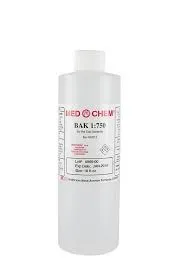Exploring the Applications and Effects of Isothiazolinone Compounds in Modern Chemistry
Isothiazolinones Understanding Their Role in Modern Chemistry
Isothiazolinones are a class of heterocyclic compounds that have gained prominence in various industries due to their unique chemical properties and broad-spectrum antimicrobial activity. These compounds are characterized by a five-membered ring structure containing both sulfur and nitrogen atoms, resulting in a highly reactive site that can interact with biological molecules. Since their discovery in the mid-20th century, isothiazolinones have become crucial components in numerous applications, particularly in the fields of consumer products, pharmaceuticals, and preservation.
Chemical Structure and Characteristics
The typical structure of isothiazolinones includes a thioketone (sulfur double bonded to carbon) and an adjacent nitrogen atom, which endows them with their distinctive reactivity. This reactivity is primarily the result of the electron-withdrawing nature of the nitrogen and sulfur atoms, making isothiazolinones effective as biocides. They can easily penetrate biological membranes and target essential cellular components, leading to cell death in bacteria, fungi, and other microorganisms.
Applications in Industry
One of the most significant applications of isothiazolinones is in the formulation of preservatives in personal care products, household cleaners, and industrial applications
. With the rise of microbial resistance to traditional preservatives, isothiazolinones have emerged as a viable alternative due to their potent antimicrobial properties. For instance, methylisothiazolinone (MIT) and chloromethylisothiazolinone (CMIT) are commonly used in cosmetics and personal care products to prevent the growth of bacteria and fungi, ensuring product stability and safety for consumers.isothiazolinones

Furthermore, isothiazolinones are employed in the paint and coatings industry. They help prevent the growth of mold and bacteria in products that are often exposed to moisture, thus extending the life of the coatings and ensuring their aesthetic appeal. The use of isothiazolinones in these applications has contributed significantly to public health by reducing the risks associated with microbial contamination.
Environmental and Health Considerations
Despite their advantages, the use of isothiazolinones is not without controversy. Increasing evidence of skin sensitization and allergic reactions, particularly with MIT, has prompted regulatory scrutiny. Some studies have linked exposure to these compounds with allergic contact dermatitis, leading to calls for their restricted use in certain applications, especially in cosmetic products. This has sparked a scientific debate on finding a balance between the benefits of using isothiazolinones and the potential health risks they pose.
To address these concerns, researchers and manufacturers are actively seeking alternatives that maintain antimicrobial efficacy without adverse effects. Innovations in formulation technologies and the development of new biocides are underway, with a focus on sustainability and safety. The future of isothiazolinones may involve decreased concentration levels in products or complete replacement by safer, naturally-derived preservatives.
Conclusion
Isothiazolinones represent a fascinating and complex area of chemistry with significant implications for public health and industry. Their powerful antimicrobial properties make them indispensable in many applications, yet their potential health risks highlight the need for ongoing research and regulation. As consumer awareness around chemical safety increases, the industry must adapt by embracing safer alternatives while simultaneously leveraging the benefits that isothiazolinones provide. Balancing efficacy with safety will be critical in shaping the future use of these compounds, ensuring that they remain both effective and safe for consumers around the world.
-
Water Treatment with Flocculant Water TreatmentNewsJun.12,2025
-
Polymaleic AnhydrideNewsJun.12,2025
-
Polyaspartic AcidNewsJun.12,2025
-
Enhance Industrial Processes with IsothiazolinonesNewsJun.12,2025
-
Enhance Industrial Processes with PBTCA SolutionsNewsJun.12,2025
-
Dodecyldimethylbenzylammonium Chloride SolutionsNewsJun.12,2025





